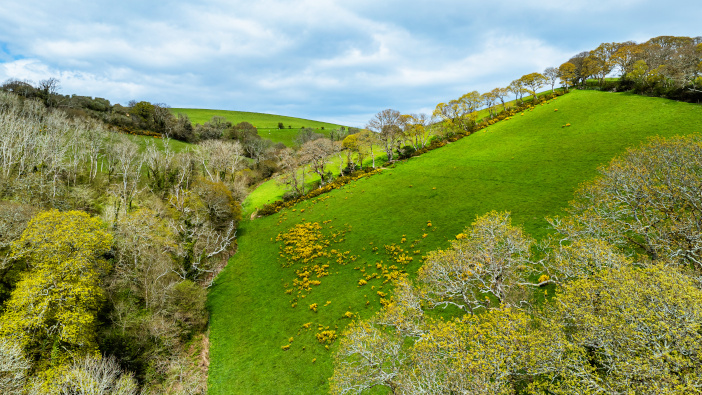After a year of significant challenges, the Knight Frank Rural Consultancy team have shared their insights into the trends and strategies that will impact rural businesses in 2025.
2024’s top trends
Simon Britton, partner and head of Agri Consultancy, points to 2024 as a year defined by financial strain and shifting priorities.
“The ongoing phase-out of the Basic Payment Scheme (BPS), paired with rising production costs, created real challenges for farm businesses,” he explains.
“Add to that the uncertainties sparked by the latest budget announcements, particularly around inheritance tax together with the slashing of BPS, and it’s been a tough year for many. However, these pressures also made it clear that adaptation is essential. Reviewing operations, improving efficiencies, and exploring new revenue streams are no longer optional – they’re vital for survival, as is planning for succession.”
For Claire Whitfield, a partner in the Rural team that specialises in the strategic consultancy and management of farms and estates, 2024 marked a significant shift in new entrants into the sector.
“We saw a noticeable rise in activity from buyers with conservation goals,” she observes. “Previously, there had been plenty of interest but few successful bids. This year, buyers with a conservation agenda – whether investment-led, charitable or driven by personal altruism – came prepared. They were better funded, more organised, and genuinely committed.
“This reflects the growing emphasis on land as a means for addressing environmental challenges while delivering financial and wider societal benefits,”
In the corporate world, James Shepherd, a partner in the Rural Consultancy team, witnessed a similar rise in natural capital as a driving force.
“In the last 12 months, we saw nature-based solutions firmly enter the boardroom,” he says. “Companies, institutions, and investors are looking for an edge in their nature recovery portfolios. The corporate appetite for biodiversity, carbon offsetting, and renewable energy projects has grown significantly, and we’re now seeing these priorities filter through supply chains.”
Meanwhile, Alice Keith, an associate in the Farms and Estates team, saw land maintain its resilience as an asset class.
“Despite the seasonal slowdown and the budget’s impact on the agricultural sector, the demand for land remained strong,” she notes.
“Its performance as an asset – outpacing gold, equities, and residential property in recent years – underscores its security and appeal as a tangible asset. Beyond that, land’s environmental value is driving opportunities for marginal spaces that were once considered unproductive.”
Predictions for 2025
Looking ahead to 2025, the team anticipates both opportunities and uncertainties. For Simon, the focus will be on financial resilience and preparation.
“Making the most of SFI and understanding the new higher tier stewardship opportunities will be a vital lifeline for rural businesses,” he explains.
“Businesses need to review their operations, understand their financial position, and create clear, achievable plans. Strategic partnerships with trusted consultants will also be key in understanding the implications of the proposed APR and BPR changes and planning for succession.”
Claire expects natural capital solutions to continue gathering momentum. “There is growing recognition that these initiatives can serve multiple purposes – enhancing biodiversity, addressing climate resilience, and offering new income streams for landowners,” she says.
“For rural businesses, this represents a unique opportunity to align land use with both environmental priorities and income generation.”
James, however, highlights the dependency on government support. “The next six months are critical,” he says. ” Significant legislation or policy announcements relating to land use, development and natural capital markets, could either catalyse or constrain progress.
“Landowners need to track policy and legislation closely and be prepared to recalibrate their plans based on the regulatory landscape.
“From an infrastructure point of view, the recently amended National Planning Policy Framework (NPPF) could introduce significant opportunities for landowners, particularly those with land in high-demand areas or lower-quality greenbelt (now “grey belt”) potentially opened for development.
“With that said, a cap on land values, the threat of compulsory purchase, stricter affordable housing requirements, climate-focused planning conditions, and increased scrutiny in the planning process will require careful financial and strategic planning to fully capitalise on these changes.”
For Alice, diversification remains a key theme for 2025. “Marginal land, which might not be suited to commercial agriculture, is brimming with potential,” she explains.
“Biodiversity projects, tree planting and carbon offsetting, together with renewable energy schemes are all areas for consideration. These opportunities demand careful planning, but the returns can be significant.”
Advice for 2025
The team’s advice is clear: act with purpose, plan strategically, and stay informed.
“Challenge traditional approaches,” urges Claire. “The old paradigms of land use are shifting. Embrace the opportunities that diversification and natural capital projects present – there’s real value in thinking differently,” she says.
James adds, “Focus on market realities. Successful projects are built on demand, not speculation. Keep your finger on the pulse of what buyers and investors value.”
Simon stresses agility. “Assess your financial resilience and align opportunities with your long-term goals,” he advises. “Be clear on your costs of production and stay on top of funding opportunities and policy changes to position your farming business for success.”
“2025 will demand creativity and action,” James concludes. “It’s a year where businesses must plan for change and can move beyond reacting to challenges and start shaping their own futures. Those who plan strategically and think boldly will find themselves ahead of the curve.”



